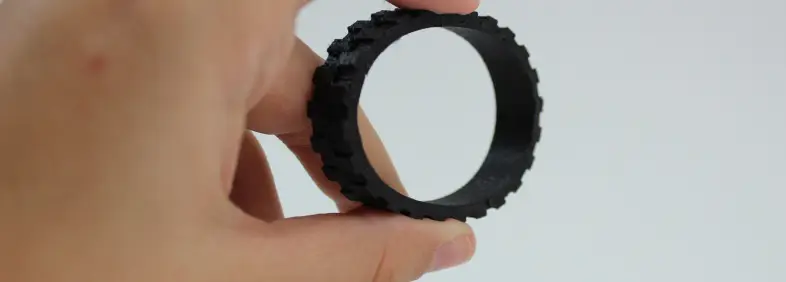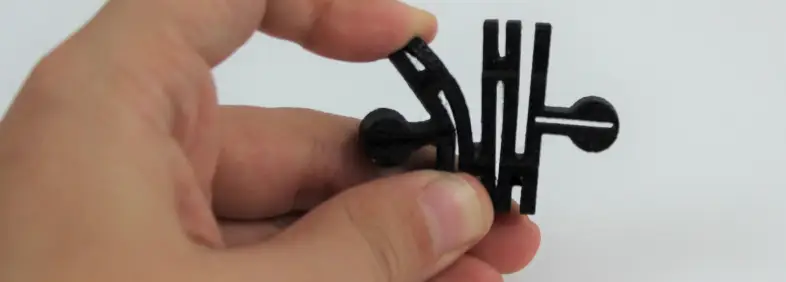No products in the basket.
Cart
3D Printing in TPU
TPU (Thermoplastic Polyurethane) is a flexible and durable material. It is known for its elasticity and durability, making it ideal for creating parts that need to bend, stretch, or resist impacts. Imagine being able to print anything from seals and gaskets to flexible robot parts or functional prototypes, all with one material. This compound offers a wide range of hardness levels, from soft and rubbery to tough and rigid, adapting to your needs.
In addition to its versatility, TPU stands out for its resistance to abrasion, wear, and tears, ensuring that your creations last over time. This material maintains its properties across various temperatures and environmental conditions, giving you the confidence that your TPU-printed parts will be reliable and durable.




Advantages of TPU
When is the perfect material choice?
Excellent for flexible or elastic parts, such as seals, covers, or protectors.
High abrasion resistance, ideal for parts subjected to constant wear.
Great elasticity, allowing deformations without breaking.
Resistant to oils, greases, and many chemicals.
Good performance in applications requiring cushioning or impact absorption.
It can be used as a friction-resistant element, such as wheels or seals.
Disadvantages of TPU
When to look for other material options
Lower precision in details due to its ability to deform during production.
Not suitable for parts that require high structural rigidity.
Lower heat resistance compared to rigid compounds such as PETG or ABS.
The surface can be more difficult to post-process than other compounds.
It absorbs moisture if subjected continuously to humid environments.
Fewer color options compared to other more commercial filaments.
Available Colors

Black
Pantone
Black
Pantone
Black

White
Pantone
White
Pantone
White
Technology used

FDM, or fused deposition modeling, is a manufacturing process used for prototyping and the production of small to medium runs. This modeling uses an additive function, depositing the material in layers to shape the part.
A filament is used that is initially stored in rolls, and is fed into a nozzle that is above the melting temperature of the material and can move in three axes controlled electronically. The nozzle moves to deposit the material in the correct location, drawing the model line by line. Once a layer is drawn, the base lowers by a layer thickness (0.1-0.4) so that the printer can continue with the next layer.
When the model to be printed has sections that protrude or have a steep angle, a support structure is created where necessary and is printed in a material that can later be easily removed, in some cases soluble. This is done to ensure that the model does not hang in the air, thus preventing the layer from falling.
Technical specifications
| Property | Value | Test Method |
|---|---|---|
| Density | 1,12 g/cm^3 | ISO 1183-1-A |
| Tensile Strength | 45 MPa | DIN 53504-S2 |
| Tensile Failure | 600 % | DIN 53504-S2 |
| Tear Resistance | 70 N/mm | ISO 34-1Bb |
| Stress at 100% Elongation | 6 MPa | DIN 53504-S2 |
| Softening Temperature | 70 ºC | DIN ISO 815 |